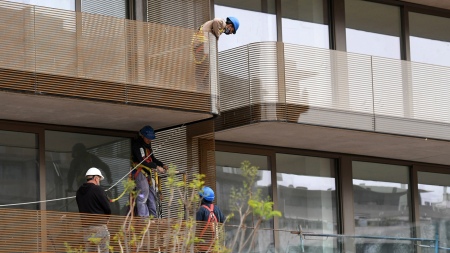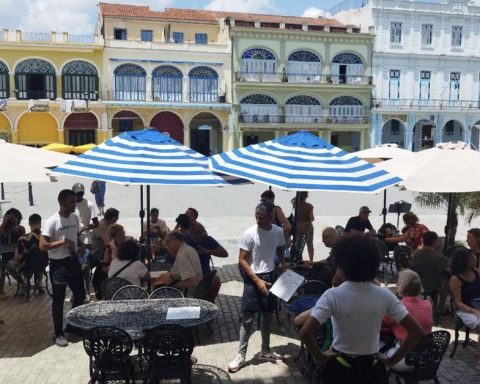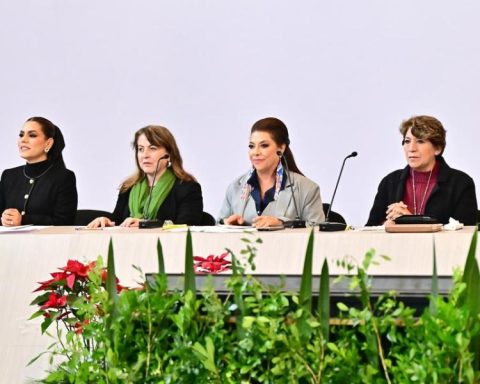Energy savings in family homes do not depend so much on electrical appliances and lighting, but on the thermal insulation of houses and apartment buildings, which in turn implies a challenge in construction and remodeling, if taken into account. that most of the buildings date from times prior to the adoption of efficiency standards.
In this sense, Federico García Zúñiga, technical consultant of the National Association of Insulating Materials Industries (Andima) and professor of the Faculty of Architecture and Urbanism of the National University of La Plata, expressed himself.
In dialogue with Télam, García Zúñiga emphasized the importance of efficient thermal insulation and, in view of the tariff segmentation policy, assured that Its application would make it possible to “save up to 35% in energy consumption and up to 60% in electricity and gas bills consumed to air-condition a home.”
Individual conscience and state concern
But the interest exceeds the individual or family concern to end up belonging to the national States themselves, according to an equation formulated by the specialist, according to which “with the same energy that feeds one house, they could supply almost two”, with the consequent savings of energy and fiscal resources.
“Energy efficiency should not be the fine print of the purchase or rental contract; quite the contrary, it should be one of the first clauses,” he emphasized, adding that the challenge is twofold since, in addition to forcing the sanction of new norms in a provincial and municipal regulation activity, implies a general awareness of the population.
In this sense, he warned that “there is very little awareness in general” and for this it is not enough to ask a family interested in buying or renting a home if, in addition to taking into account price, location, surface area and common services, they add the energy efficiency of the construction to the set of requirements.
“Energy efficiency should not be the fine print of the purchase or rental contract; quite the contrary, it should be one of the first clauses”Federico García Zúñiga, technical consultant
Although the answers are mostly negative, García Zúñiga conceded that the affirmatives are on the rise “because of the professional interventions and that not only Economic and environmental aspects are not taken into account, but rather the health of the inhabitants of the buildings.
“Poor insulation can cause condensation on the walls and this is verified by the appearance of mold on furniture and clothing, but also by affecting the respiratory tract,” he said.
García Zúñiga stressed the importance of analyzing the problem considering that, until the energy transition process is completed throughout the planet, nonrenewable resources are scarce and that implies that countries must assume increasing costs to supply their population, a concept that in Europe -precisely because of its dependence on fossil fuels- began to take shape in the midst of the oil crisis of the 1970s. Last century.
“Now they are redoubling the bet,” he said, alluding to the gas and oil supply problems after the war between Russia and Ukraine.

legislation
The rise in the international price of energy and the high level reached by economic subsidies established a propitious framework for that concern and awareness is also installed in the Argentina and, for this, García Zúñiga assured that there is adequate legislation, beyond the need for permanent updates.
One of those rules is house labeling, similar to that applied to household appliances, an initiative that is gradually being installed and that from the Ministry of Energy is disseminated through training workshops throughout the country, with the participation of the director of Renewable Energy, Gabriela Richter; the person in charge of the Energy Efficiency Program, Irma Padilla, and the reference of the National Housing Labeling Program, Paola Sandoval.
García Zúñiga rescued the Spain experience, in which the labeling already appear in real estate ads and “in this way, people make the decision to buy or rent, among other things, based on the labeling.”
Both in Spain and in Argentina and most of the world there is a factor that works against it and that is that “there is a building park that is prior” to the application of energy efficiency measures, and that the reconditioning or “retrofitting” process “It will take several decades.
In any case, he recognized that both in Spain and in Argentina and most of the world there is a factor that works against and is that “There is a building park that is prior” to the application of energy efficiency measures, and that the reconditioning or “retrofitting” process will take several decades.
In this regard, the Ministry for the Ecological Transition and the Demographic Challenge verified, after a survey carried out in 2018, that 84% of Spanish homes have the lowest ratings (from E to G), with an energy consumption of 90 % greater than that of categories A or B, with barely 1% of the total building stock.
so that the buildings are energy efficientBesides the orientation and ventilationare of decisive importance thermal insulation materials as the glass wool for roofs, expanded polystyrene or EPS and polyurethane.
García Zúñiga assures that the incorporation of these materials represents an additional cost of no more than 1.5% for a venture that starts from scratch and that, consequently, energy efficiency is far from being an exclusive concern of medium or high sectors.

















